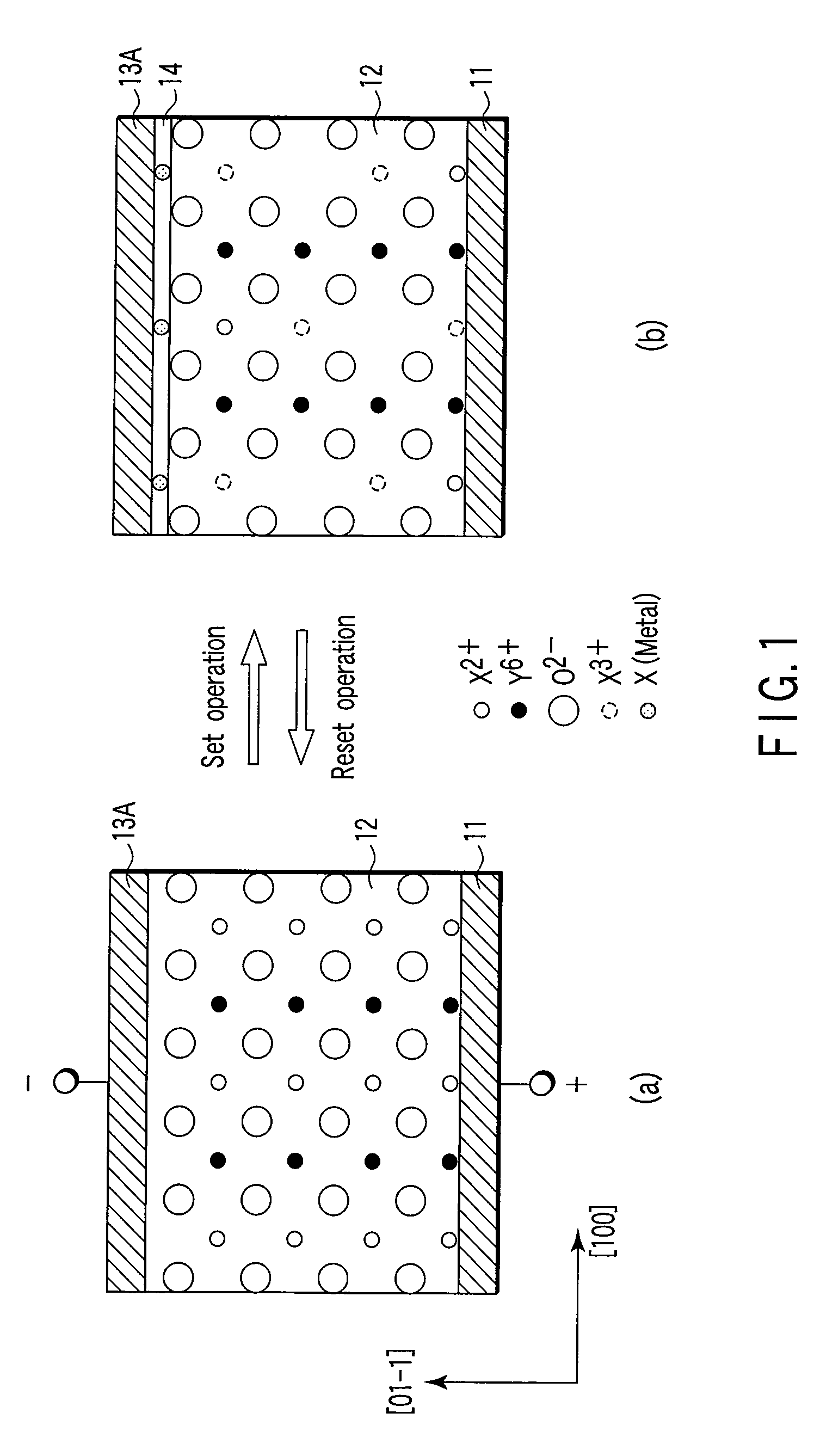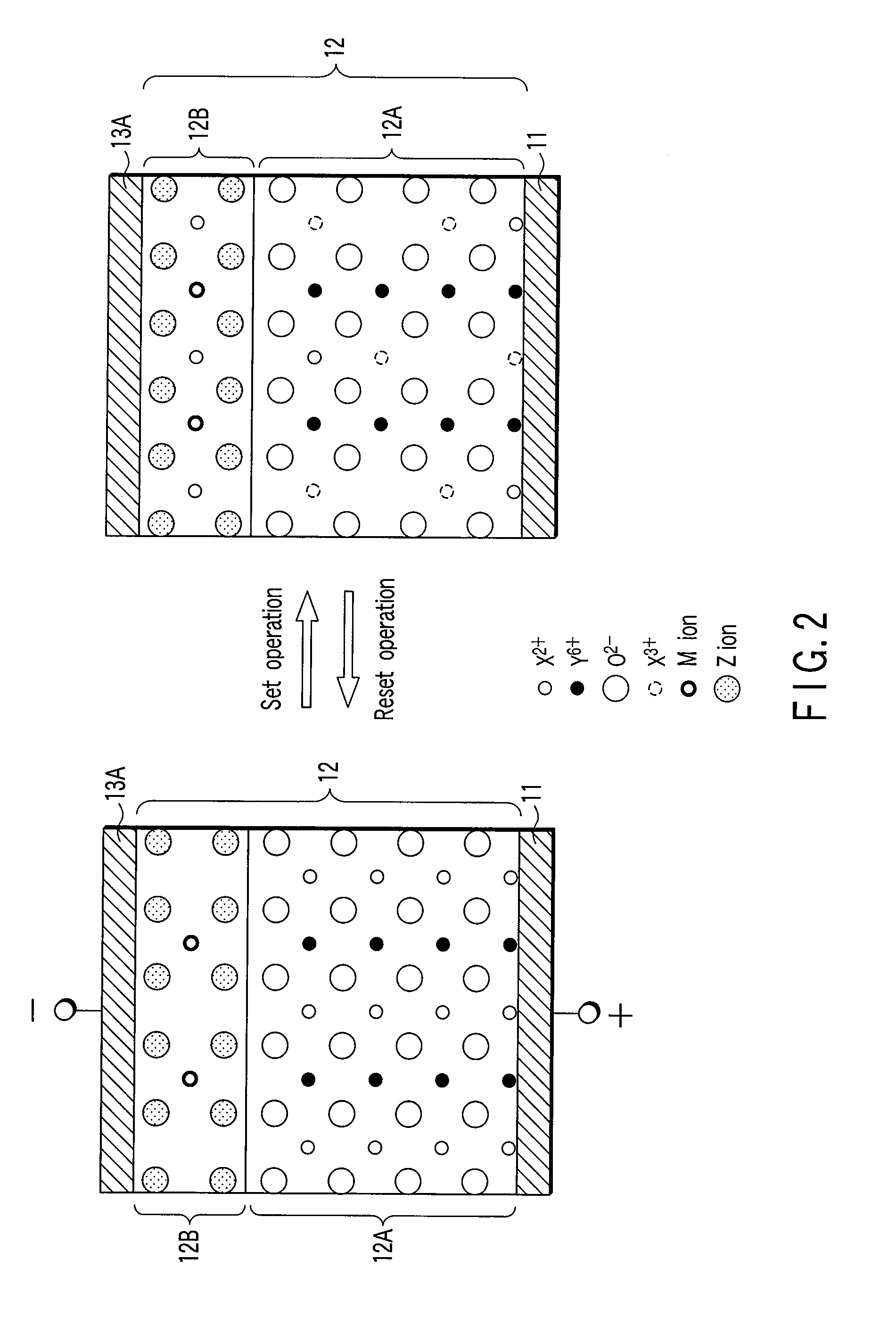Information recording/reproducing device
a recording/reproducing device and information technology, applied in the field of information recording/reproducing devices with high, can solve the problems of insufficient realization of new information recording media using such new recording materials, and too large consumption, and achieve the effect of low power consumption and high thermal stability
- Summary
- Abstract
- Description
- Claims
- Application Information
AI Technical Summary
Benefits of technology
Problems solved by technology
Method used
Image
Examples
first example
[0204
[0205]The first example is a case where the materials of FIG. 1 are used for the recording layer.
[0206]Firstly, as shown in FIG. 7, there is prepared a state where the electric potential of the probe 24 is relatively lower than the electric potential of the electrode layer 21. The probe 24 may be supplied with a negative electric potential, when the electrode layer 21 has a fixed electric potential, for instance, ground potential.
[0207]The current pulse is generated by emitting electrons toward the electrode layer 21 from the probe 24 while using, for instance, an electron generating source or hot electron source. Alternatively, it is also possible to bring the probe 24 into contact with the surface of the recording bit 27 to apply the voltage pulse.
[0208]At this time, for instance, in the recording bit 27 of the recording layer 22, part of X ions moves to the probe (cathode) 24 side, and the number of X ions inside the crystal relatively decreases in comparison to the number o...
second example
[0218
[0219]The second example shows a case where the materials of FIG. 2 are used for the recording layer.
[0220]Firstly, as shown in FIG. 9, there is prepared a state where the electric potential of the probe 24 is relatively lower than the electric potential of the electrode layer 21. It is only necessary to supply a negative potential to the probe 24 when the electrode layer 21 has a fixed electric potential, for instance, ground potential.
[0221]At this time, part of X ions inside the first chemical compound (anode side) 12A of the recording layer 22 is accommodated in the vacant site of the second chemical compound (cathode side) 12B while moving inside the crystal. With this, the valence of X ions inside the first chemical compound 12A increases, while the valence of M ions inside the second chemical compound 12B decreases. As a result, conductive carriers are generated inside the crystal of the first and second chemical compounds 12A, 12B, and then both come to have the electri...
experiment example
[0230]C. Experiment Example
[0231]The recording medium having the structure shown in FIG. 7 is used as a sample, and evaluation may be performed by using a pair of acicular probes whose diameter of a leading edge is 10 nm or less.
[0232]The electrode layer 21 is, for instance, a Pt film formed on a semiconductor substrate. In order to increase adhesion properties between the semiconductor substrate and a lower electrode, Ti of about 5 nm may be used as an adhesion layer. The recording layer 22 can be obtained by performing RF magnetron sputtering on a disk in a mixed gas of argon and oxygen while maintaining the temperature of the disk at a high temperature of about 600° C., by using a target in which components are adjusted so as to have the desired composition. Further, as the protection layer, for instance, diamond-like carbon may be formed by the CVD method. The film thickness of the respective layers can be designed so as to optimize a resistance ratio between the low resistance ...
PUM
 Login to View More
Login to View More Abstract
Description
Claims
Application Information
 Login to View More
Login to View More - R&D
- Intellectual Property
- Life Sciences
- Materials
- Tech Scout
- Unparalleled Data Quality
- Higher Quality Content
- 60% Fewer Hallucinations
Browse by: Latest US Patents, China's latest patents, Technical Efficacy Thesaurus, Application Domain, Technology Topic, Popular Technical Reports.
© 2025 PatSnap. All rights reserved.Legal|Privacy policy|Modern Slavery Act Transparency Statement|Sitemap|About US| Contact US: help@patsnap.com



